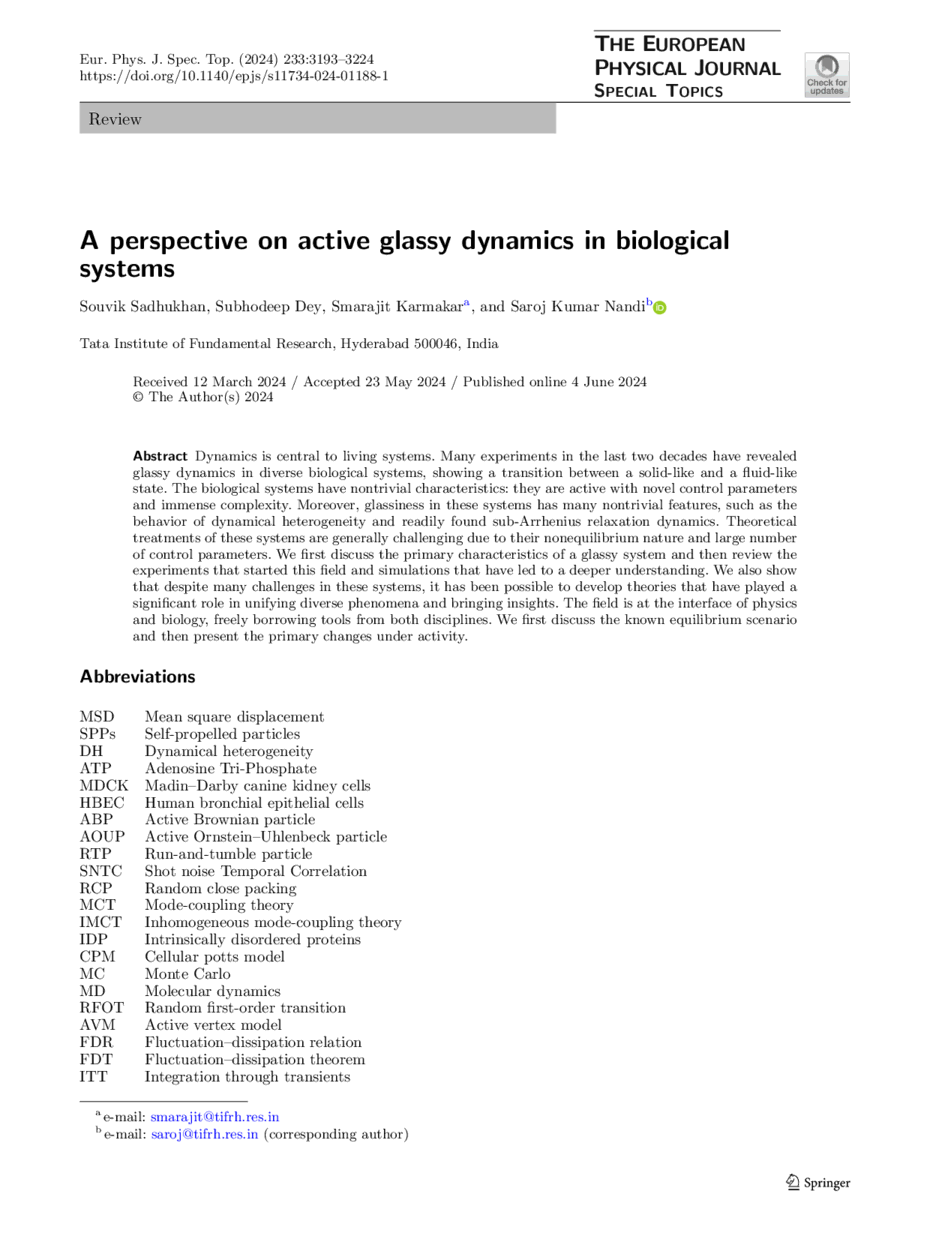https://doi.org/10.1140/epjs/s11734-024-01188-1
Review
A perspective on active glassy dynamics in biological systems
Tata Institute of Fundamental Research, 500046, Hyderabad, India
Received:
12
March
2024
Accepted:
23
May
2024
Published online:
4
June
2024
Dynamics is central to living systems. Many experiments in the last two decades have revealed glassy dynamics in diverse biological systems, showing a transition between a solid-like and a fluid-like state. The biological systems have nontrivial characteristics: they are active with novel control parameters and immense complexity. Moreover, glassiness in these systems has many nontrivial features, such as the behavior of dynamical heterogeneity and readily found sub-Arrhenius relaxation dynamics. Theoretical treatments of these systems are generally challenging due to their nonequilibrium nature and large number of control parameters. We first discuss the primary characteristics of a glassy system and then review the experiments that started this field and simulations that have led to a deeper understanding. We also show that despite many challenges in these systems, it has been possible to develop theories that have played a significant role in unifying diverse phenomena and bringing insights. The field is at the interface of physics and biology, freely borrowing tools from both disciplines. We first discuss the known equilibrium scenario and then present the primary changes under activity.
© The Author(s) 2024
 Open Access This article is licensed under a Creative Commons Attribution 4.0 International License, which permits use, sharing, adaptation, distribution and reproduction in any medium or format, as long as you give appropriate credit to the original author(s) and the source, provide a link to the Creative Commons licence, and indicate if changes were made. The images or other third party material in this article are included in the article's Creative Commons licence, unless indicated otherwise in a credit line to the material. If material is not included in the article's Creative Commons licence and your intended use is not permitted by statutory regulation or exceeds the permitted use, you will need to obtain permission directly from the copyright holder. To view a copy of this licence, visit http://creativecommons.org/licenses/by/4.0/.
Open Access This article is licensed under a Creative Commons Attribution 4.0 International License, which permits use, sharing, adaptation, distribution and reproduction in any medium or format, as long as you give appropriate credit to the original author(s) and the source, provide a link to the Creative Commons licence, and indicate if changes were made. The images or other third party material in this article are included in the article's Creative Commons licence, unless indicated otherwise in a credit line to the material. If material is not included in the article's Creative Commons licence and your intended use is not permitted by statutory regulation or exceeds the permitted use, you will need to obtain permission directly from the copyright holder. To view a copy of this licence, visit http://creativecommons.org/licenses/by/4.0/.





